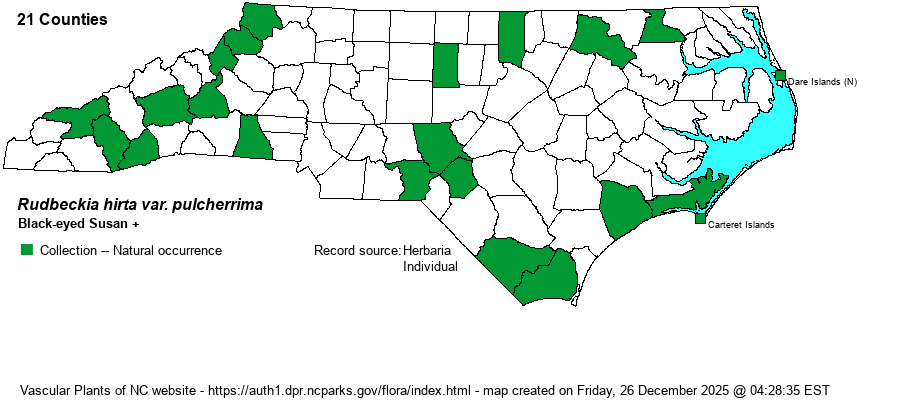| taxonName | relationship | relatedTaxonName | relatedTaxonRefText | relComments |
|---|
|
|
|
|
|
|
|
| Rudbeckia hirta var. pulcherrima | > | Rudbeckia serotina var. serotina | Fernald (1950) | |
| Rudbeckia hirta var. pulcherrima | > | Rudbeckia serotina var. serotina | | |
| Rudbeckia hirta var. pulcherrima | > | Rudbeckia serotina var. corymbifera | Fernald (1950) | |
| Rudbeckia hirta var. pulcherrima | > | Rudbeckia serotina var. sericea | Fernald (1950) | |
| Rudbeckia hirta var. pulcherrima | < | Rudbeckia hirta | Gleason (1952) | |
| Rudbeckia hirta var. pulcherrima | < | Rudbeckia hirta | Radford, Ahles, and Bell (1968) | |
| Rudbeckia hirta var. pulcherrima | < | Rudbeckia hirta | Wofford (1989) | |
| Rudbeckia hirta var. pulcherrima | < | Rudbeckia hirta | Wunderlin & Hansen Flora of Florida (3) | |
| Rudbeckia hirta var. pulcherrima | > | Rudbeckia hirta | | |
| Rudbeckia hirta var. pulcherrima | > | Rudbeckia bicolor | | |
| Rudbeckia hirta var. pulcherrima | > | Rudbeckia bicolor | Small (1933, 1938) | |
| Rudbeckia hirta var. pulcherrima | > | Rudbeckia longipes | Small (1933, 1938) | |
| Rudbeckia hirta var. pulcherrima | > | Rudbeckia sericea | Small (1933, 1938) | |
| Rudbeckia hirta var. pulcherrima | > | Rudbeckia hirta var. corymbifera | Perdue (1957)=Z. Key adapted in part from SE and FNA. | |
| Rudbeckia hirta var. pulcherrima | > | Rudbeckia hirta var. pulcherrima | Perdue (1957)=Z. Key adapted in part from SE and FNA. | |
| Source: Weakley's Flora |

